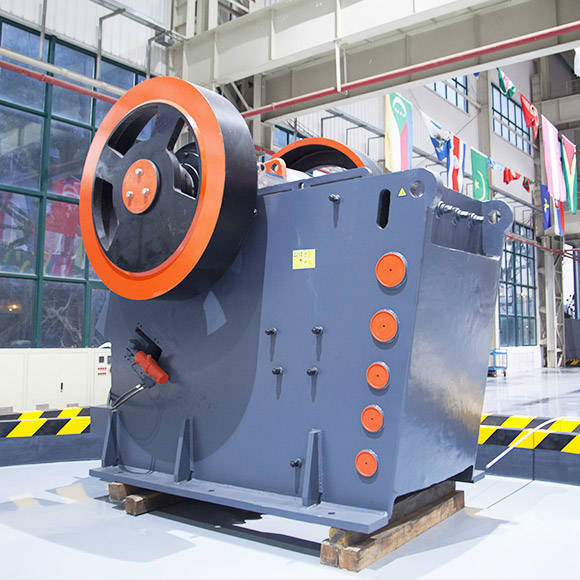A jaw crusher is a fundamental piece of machinery used in various industries for crushing large rocks, stones, and other solid materials into smaller, more manageable pieces. It plays a crucial role in the mining, construction, and recycling industries, among others. In this explanation, we will explore the simple structure of a jaw crusher and its essential components.

Frame Of Jaw Crusher:
The jaw crusher’s frame is a sturdy structure that supports the other components. It is typically made of cast steel or cast iron, providing the necessary strength to withstand the crushing forces. The frame also houses the eccentric shaft and toggle plate assembly.
Eccentric Shaft Of Jaw Crusher:
The eccentric shaft is a critical component that drives the movable jaw forward and backward. It is mounted in the frame and rotates at a fixed speed. The motion generated by the eccentric shaft causes the crushing action as the movable jaw moves towards and away from the fixed jaw.
Movable Jaw Of Jaw Crusher:
The movable jaw, also known as the swing jaw, is attached to the eccentric shaft and moves in a reciprocating motion. This jaw exerts force on the material, breaking it into smaller pieces when it approaches the fixed jaw. It plays a crucial role in the crushing process.
Fixed Jaw Of Jaw Crusher:
The fixed jaw, also called the stationary jaw, is the immovable part of the jaw crusher. It acts as a surface against which the material is crushed by the movable jaw. The gap between the fixed and movable jaws determines the size of the crushed material.
Toggle Plate Of Jaw Crusher:
The toggle plate is a safety mechanism that connects the movable jaw to the frame. It prevents damage to the crusher in case of an uncrushable object entering the crushing chamber. When an excessive force is applied, the toggle plate breaks, protecting the rest of the crusher.
Pitman Of Jaw Crusher:
The pitman is a connecting rod that connects the movable jaw to the eccentric shaft. It converts the rotary motion of the eccentric shaft into the reciprocating motion of the movable jaw.
Bearings Of Jaw Crusher:
High-quality bearings are crucial for the smooth operation of a jaw crusher. They support the eccentric shaft and other moving parts, reducing friction and ensuring efficient performance.
Flywheel Of Jaw Crusher:
The flywheel is a heavy, balanced wheel mounted on the eccentric shaft. It stores energy and helps to smooth out the crusher’s operation by providing momentum during the crushing cycle. It also assists in starting and stopping the crusher.
Adjustment Mechanism Of Jaw Crusher:
Jaw crushers often have an adjustment mechanism that allows users to change the size of the crushed material. This can be achieved by adjusting the position of the toggle plate or using hydraulic systems for more advanced crushers.
Crushing Chamber Of Jaw Crusher:
The space between the movable and fixed jaws is known as the crushing chamber. The size and shape of this chamber influence the final product size. Different crushers may have variations in chamber design to optimize crushing performance for specific applications.
Jaw crusher is a robust piece of machinery with a relatively simple but effective structure. Its main components include the frame, eccentric shaft, movable jaw, fixed jaw, toggle plate, pitman, bearings, flywheel, adjustment mechanism, and crushing chamber. Understanding these components and their functions is essential for the efficient and safe operation of a jaw crusher in various industrial applications.
